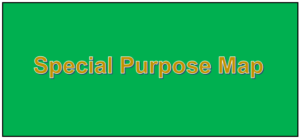As a result of intensive research in the field of geographical features, many software and technologies have emerged with the aim of carrying more research. Grass GIS (Geographic Resource Analysis Support System) and QGIS are examples of systems used in handling geographical information. Due to the common features found in both systems, it may not be easy to differentiate them. However, there exist different features that can be used to differentiate the two systems.
Differences:
1. Definition
GRASS GIS- GRASS stands for Geographic Resource Analysis Support System; it is a system that contains Geographic information and is always open and can be accessed freely. It provides tools, programs, and information that are used in various institutions.
QGIS- on the other hand, QGIS is a system used for various operations on geographical information. The software plays a vital role in editing, analyzing, and recording spatial information. Also, it assists in composing and exporting Geographical maps.
2. How they work
GRASS GIS- this system usually contains over 300 modules of maps and images used in the Geographical analysis and other spatial activities. It manipulates both the raster and vector data.
QGIS- Whereas QGIS
is a framework that supports both raster and vector layers and allows users to analyze and edit spatial information.
3. Symbols
Symbols in this context, are then used to represent various physical features.
GRASS GIS- in this system, only raw images are found, and thus symbols may not be applicable.
QGIS- life on QGIS is made easier as it comes with creating symbols to represent various features. These symbols rock your readers’ world and thus are beneficial.
4. Altering geometries
In any cartographer’s work, editing and sampling are vital in generalizing features. However, this may not be accepted by all technologies.
GRASS GIS- altering the feature using a GRASS system can be difficult and tricky. The cartographer may need an advanced license to be able to edit or convert data.
QGIS- however, using this system, editing and data conversion are pretty easy and free. Allows the user to edit the original copy, add their information, convert lines to polygons, etc.
5. Data entry
These two types of systems are hard-hitting when it comes to data entry; they both perform magic. However, they somehow differ.
GRASS GIS- during the data entry, you have to create fields (integer, text, double, date, or float), and once the field is created, you cannot rename the field. Rather, you have to create a new field. Then, you can copy your content over the new field.
QGIS- with this system, you create your fields
(integer, text, double, date, or float) where the data is added. Unlike the GRASS system, fields created in QGIS can be edited and renamed using the Table Manager Plug-in.
6. Data interoperability
Data interoperability refers to the ability of the system to interact with another system freely.
GRASS GIS- the data interoperability in this system is decent. Multiple data inputs are available and thus making the documentation process superb.
QGIS- data interoperability of this system is not decent as it is in the GRASS system.




Gregory
23 Dec 2023I’m a little confused here: where did you get the idea that GRASS needs software licenses? It’s free and open source software. ESRI requires software licenses.